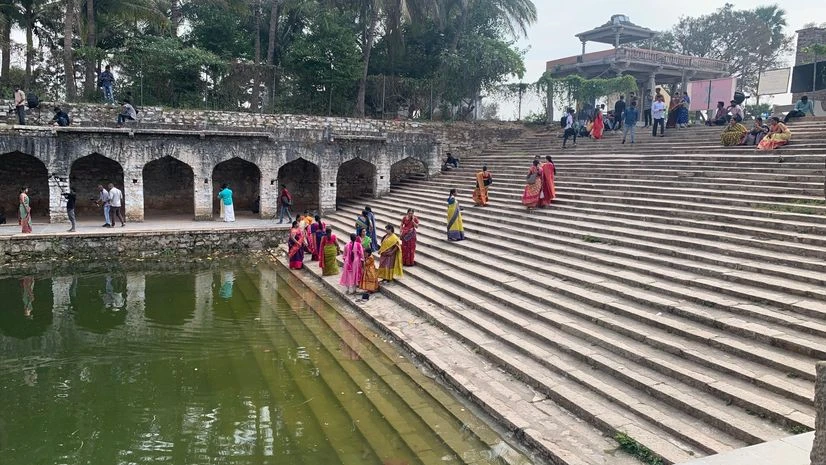)
Stepwells, once vital sources of water in rural and urban areas, are great examples of ancient engineering. Image: Shutterstock
The Bharat Biotech signed a Memorandum of Understanding with SAHE (The Society for Advancement of Human Endeavor) on Friday evening to rejuvenate and architecturally restore the historic stepwells at Ammapalli Temple and Salar Jung Museum.
“By restoring these step-wells, Bharat Biotech aims to preserve cultural heritage, promote water conservation, and improve lives and livelihoods by boosting eco-heritage tourism in Telangana,” an official release stated.
Click here to connect with us on WhatsApp
This initiative comes as a part of the Telangana government’s Corporate Social Responsibility (CSR) initiative.
The memorandum was signed in the presence of Telangana Chief Minister Revanth Reddy, Minister for Youth Advancement, Tourism and Culture, Jupally Krishan Rao, and A Vani Prasad, Principal Secretary, Youth Advancement, Tourism and Culture for the restoration of these structures.
“Through our humble contribution, we are supporting a far-reaching cause to breathe new life into these vital, ancient step-wells, inspiring the community to engage with its rich heritage and promoting sustainable water management,” said Suchitra Ella, Managing Director of Bharat Biotech.
“This initiative reflects our commitment to giving back and working together to preserve our cultural legacy,” she added.
Additionally, Bharat Biotech has also collaborated with the Confederation of Indian Industry (CII), Telangana, to promote environmental sustainability, preserve cultural heritage, and support Eco-Heritage Tourism.
“The partnership with local government and industry stakeholders signifies a shared dedication to not only restore these step-wells of Ammapalli Temple and Salar Jung Museum but also to educate the public about their cultural significance,” Ella added.
Stepwells, once vital sources of water in rural and urban areas, are great examples of ancient engineering and architecture.
The Ammapalli Temple stepwell, believed to date back to the 13th century, served pilgrims and local communities with water for centuries. Similarly, the stepwell at Salar Jung Museum, dating back to the Qutb Shahi period, known for its exquisite collection of art and artifacts, has historical significance as a community resource, the release stated.
Today, iconic step-wells like Agrasen ki Baoli in Delhi attract many tourists, and Rani ki Vav near Ahmedabad has even earned UNESCO heritage status.
However, the situation is quite different for smaller, less ornate stepwells. With a consistent supply of water in homes, these traditional structures have lost their importance. Many have been demolished to make way for expanding urban areas, while others have unfortunately been repurposed as dumping grounds.
According to UNESCO, India is the largest extractor of groundwater in the world, with levels estimated to have dropped by 61 per cent between 2007 and 2017. Although the country receives an average annual rainfall of about 1,170 millimetres (mm)–sufficient for water security if rainwater harvesting is effectively implemented–restored stepwells could significantly enhance this effort. These structures can capture substantial amounts of rainwater, particularly during the monsoon season, helping to replenish groundwater supplies, the release added.
(Only the headline and picture of this report may have been reworked by the Business Standard staff; the rest of the content is auto-generated from a syndicated feed.)
First Published: Sep 28 2024 | 2:57 PM IST





